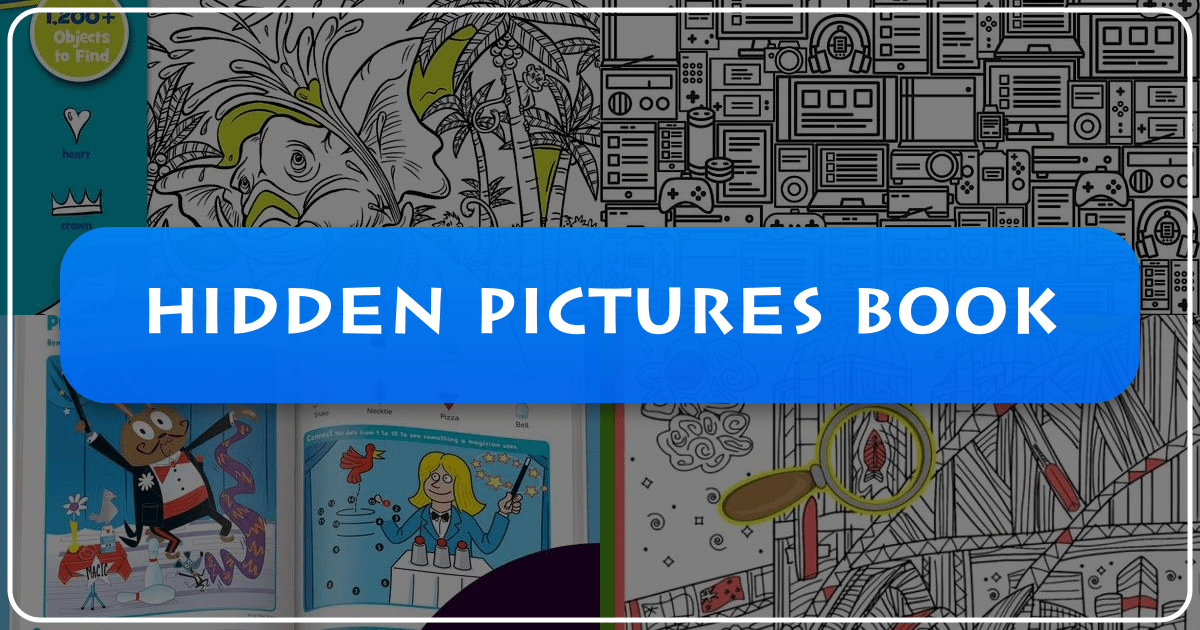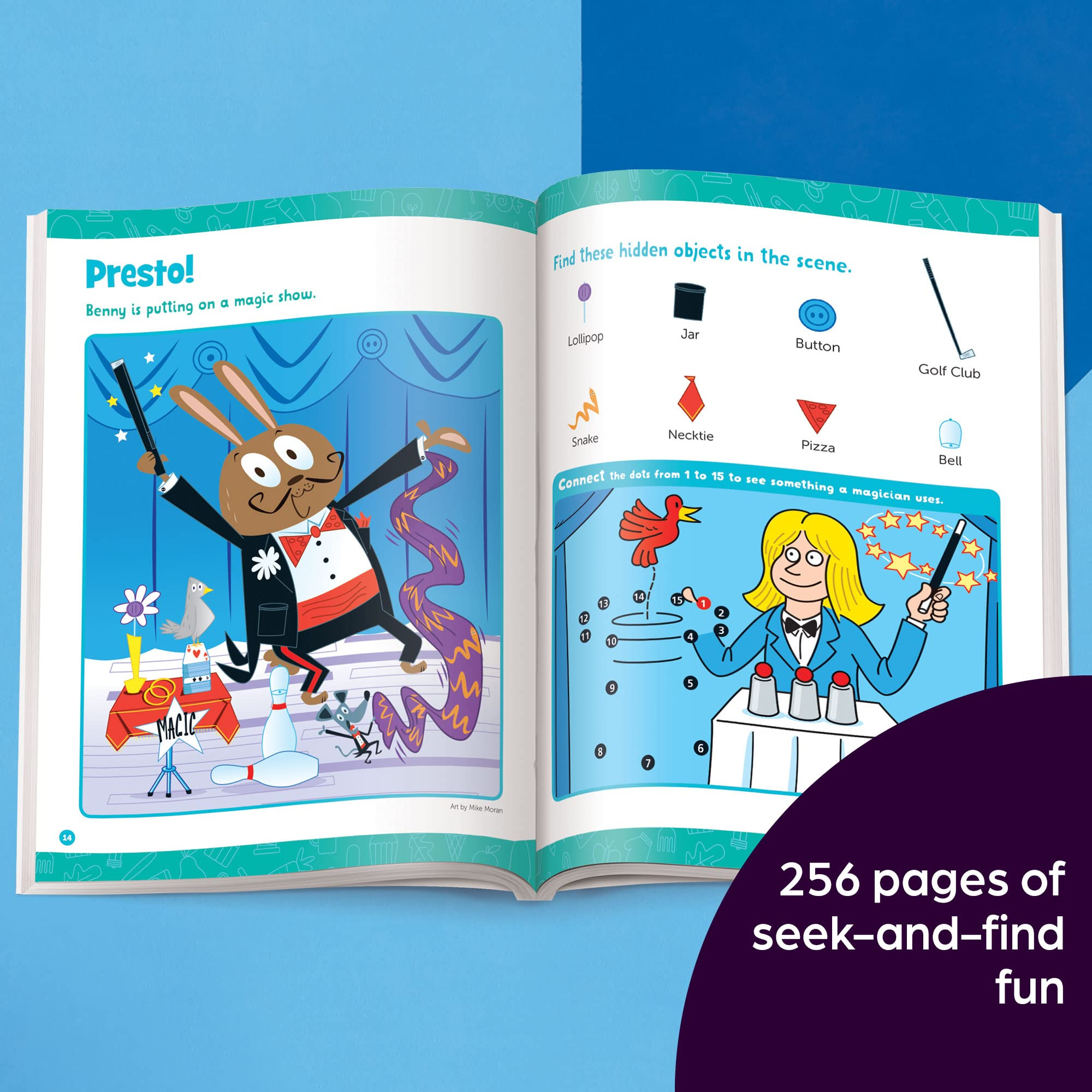Hidden Pictures Book: A Deep Dive into Jason Rekulak's Supernatural Thriller

The “Hidden Pictures” book, penned by Jason Rekulak, isn’t your average supernatural thriller. It’s a carefully crafted tapestry woven with threads of mystery, suspense, horror, and surprisingly, genuine warmth. The novel’s unique integration of illustrations adds a distinct layer, enhancing the reading experience and creating a chillingly effective narrative. This in-depth analysis explores the book’s various facets, examining its plot, character development, artistic elements, and overall impact. We will delve into the various elements that make “Hidden Pictures” a compelling read, analyzing its strengths and acknowledging its limitations.
The Intriguing Plot of “Hidden Pictures”
Rekulak masterfully constructs a plot that unfolds at a brisk pace, keeping readers consistently engaged. While the novel’s length might seem substantial at nearly four hundred pages, the compelling narrative makes it a relatively quick read. The story unfolds from the perspective of Mallory Quinn, a woman striving for sobriety after overcoming drug addiction. Seeking stability, she accepts a babysitting position for the Maxwell family’s five-year-old son, Teddy, in the affluent New Jersey suburb of Spring Brook.

Mallory quickly develops a strong bond with Teddy, a sweet and shy child who expresses himself through his drawings. Initially, his sketches depict common subjects—trees, rabbits, and balloons. However, a significant shift occurs when Teddy begins to draw increasingly disturbing images: a man dragging a lifeless body through a forest. This unsettling shift marks the beginning of a chilling mystery. Teddy’s artwork evolves from simple stick figures to remarkably lifelike representations, far exceeding the capabilities of a five-year-old.

Mallory becomes convinced these drawings are glimpses into a long-unsolved murder, possibly channeled through a supernatural entity inhabiting the Maxwell’s property. Fueled by suspicion, a past tragedy of her own, and the potential danger to Teddy, she begins an investigation, seeking to decipher the cryptic images before it’s too late. Assisted by a charming landscaper, Adrian, and a somewhat eccentric neighbor, Mallory pieces together clues, navigating the complexities of the mystery while grappling with her own personal demons.
The narrative unfolds with a strategic balance of clues, suspenseful moments, and surprising plot twists. While familiar themes are present, their integration within the story is seamless and carefully timed. The escalating tension, coupled with the unsettling visual elements, maintains a captivating pace that keeps the reader completely immersed.

The Effectiveness of the Narrative Structure
Rekulak employs a first-person narrative, offering an intimate perspective into Mallory’s thoughts and feelings. This allows readers to intimately experience her struggles, fears, and motivations as the mystery unravels. The first-person perspective further amplifies the suspense and horror elements, making the chilling atmosphere even more palpable.
The plot’s pacing is expertly managed. Each chapter contributes meaningfully to the overarching narrative, building tension systematically and maintaining an intriguing sense of mystery. The narrative carefully avoids predictable tropes and provides a satisfying resolution that avoids clichés and leaves an emotional impact on the reader.
Character Development in “Hidden Pictures”
While the plot is a significant strength, the character development is somewhat uneven. Mallory, as the narrator, is the most fully realized character, displaying complexities and vulnerabilities that resonate deeply with the reader. Rekulak portrays her past addiction and the challenges of recovery with a degree of sensitivity and nuance, avoiding harmful stereotypes and clichés. Mallory’s past experiences shape her decisions and actions throughout the story, adding a layer of depth and realism to her character.
Other characters, however, are less fully developed. While the supporting characters serve a purpose in advancing the plot, their portrayals feel less nuanced and sometimes fall short in providing well-rounded personalities. Notably, the neighbor is depicted as somewhat eccentric and exhibits racially insensitive behavior, an element that the narrative doesn’t fully address or condemn.
Mallory Quinn: A Compelling Protagonist
Mallory’s character arc is central to the story’s success. She is not simply a victim but a determined individual, actively working to overcome her past and protect Teddy. Her vulnerabilities and strengths are effectively balanced, making her a relatable and empathetic character. Her struggles with addiction and the emotional weight of her past are conveyed with care and sensitivity, preventing the story from slipping into easy or exploitative depictions of these difficult issues.
The reader becomes invested in Mallory’s journey, both personally and in terms of the mystery, making her triumphs and setbacks integral to the narrative’s emotional power. Her courage, determination, and genuine concern for Teddy drive the plot forward, giving the narrative a core of moral integrity.
The Artistic Integration of Illustrations
One of the most striking aspects of “Hidden Pictures” is its unique incorporation of illustrations. These images are not mere decorative additions but integral components of the narrative, adding depth and complexity to the story. The artwork ranges in style, from the simplistic drawings of a young child to chillingly realistic and emotionally evocative pieces.
The illustrations effectively amplify the story’s suspense and horror elements. They visually reflect the growing unease and sinister events unfolding in the narrative. The visual contrast between childlike drawings and the disturbing realities they represent is masterfully used to enhance the story’s overall impact.
Enhancing the Reading Experience
The integration of illustrations transforms the reading experience, moving beyond the typical reliance on textual descriptions alone. The visual cues enhance the reader’s engagement with the mystery, offering another dimension of engagement and interpretation. The illustrations provide a direct visual representation of Teddy’s drawings, allowing the reader to directly experience their chilling progression. This directly involves the reader in the story’s progression and resolution.
By combining visual and textual elements, the novel creates a more immersive and layered reading experience, enhancing the emotional impact and narrative tension.
The Cultural Impact and Reception of “Hidden Pictures”
“Hidden Pictures” has achieved significant recognition, including a Goodreads Choice Award for Horror in 2022. This acknowledges its impact within the genre, highlighting its originality and compelling narrative. The positive reception reflects the novel’s ability to blend familiar horror tropes with a uniquely captivating and inventive plot, and the innovative incorporation of illustrations.
The novel has generated considerable discussion and engagement among readers and critics alike, furthering its impact within the literary sphere. Its blend of genres, its distinct artistic approach, and its well-paced suspenseful narrative make it a unique contribution to contemporary horror fiction.
Critical Acclaim and Reader Response
The critical praise garnered by “Hidden Pictures” highlights its originality and creativity, and particularly, the effective use of illustrations within a novel. Stephen King’s endorsement, describing the book as “terrific,” significantly amplified its public visibility. The novel’s success is further testament to the effectiveness of blending literary storytelling with visual elements to generate a unique and impactful reader experience.
The reader response is predominantly positive, with many praising the book’s compelling plot, its suspenseful pacing, and the unique integration of illustrations. However, some readers have noted minor shortcomings in the character development and the handling of certain social issues within the narrative. These varying responses are testament to the subjective nature of literary appreciation, but overall, the overwhelmingly positive reception confirms the book’s considerable literary merit.
Conclusion: A Unique and Compelling Read
Jason Rekulak’s “Hidden Pictures” is a notable achievement in the supernatural thriller genre. The novel’s strengths lie in its well-paced and inventive plot, its compelling protagonist, and its innovative integration of illustrations. While some aspects of character development and thematic exploration could be improved, its overall impact is undeniable. The novel’s success in blending genres and artistic elements creates a unique reading experience that deserves its place amongst notable works in contemporary horror fiction. The illustrations themselves add a significant dimension, making it a truly distinctive and memorable read. Readers looking for a gripping, suspenseful, and original horror tale should definitely add “Hidden Pictures” to their reading list.